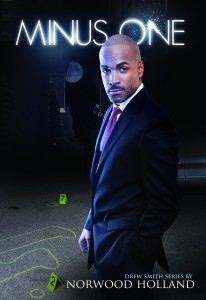A Washington Tradition Back to Segregation
April 5, 2010
Last week Eugene Allen died at age 90. The White House butler for 8 presidents from 1952 to 1986 started out as a “pantry man” and dishwasher moving up to Maitre d’. Allen probably took to his grave a host of inside stories of White House goin’ ons, juicey tidbits whispered in confidence among the colored help. No doubt Allen was often an active planner and participant in a White House tradition taking place today, the Easter Egg Roll, the biggest annual White House gathering. He was there when Mamie Eisenhower decided it was time to desegregate the event.
African American children were not allowed inside the White House gates, a tradition dating back to 1878 when Rutherford B. Hayes– the same President who ended Reconstruction–hosted the first White House Easter Egg Roll. Occurring on Easter Sunday a workday for most of Washington’s Black servants who even if possible couldn’t afford to take off and chaperon their children to the public event. Two years later the Smithsonian began what became another tradition believed to be a direct response to the White House practice making African-American children persona non grata.
To this day on Easter Monday D.C.’s children of color still gather at the Smithsonian National Zoo where “ice cream, food and Easter egg hunts await them.” As a child growing up here I remember Washington as a largely segregated city in the 1950s. Like Eugene Allen I’ve seen much change. African Americans coming and going through White House gates are a common occurrence–only now their presence is no longer restricted to the back of the house.
Prestigious Law Firms Scale Back Diversity Recruitment
April 1, 2010
In February, 2009 Yolanda Young filed a discrimination complaint against her former employer Covington & Burling alleging racial discrimination. The firm countered with innuendo calling her an average law student citing her Bar Exam scores as less than outstanding. This despite during her tenure she received a bonus for her outstanding performance. The bar exam tests the minimum competence to practice law. The firm didn’t argue Young’s lack of competence and no wonder, she graduated from Howard University and Georgetown Law; lectured at Vassar College and Louisiana State University; sold her first book (On Our Way To Beautiful) to Random House; provided commentary to NPR and wrote for both The Washington Post and USA Today. Young obviously a high achiever was hired by the firm in February, 2005 as a Staff Attorney. Staff attorneys are the lowest of the pecking order under Partners, Associates, and Special Counsel and are rarely promoted onto the partnership track. Young spoke out writing a piece published in U.S.Today exposing the firm’s practice of concentrating minorities at the bottom rung. Subsequently Young alleged management began a clandestine campaign of harassment and discrimination ending in termination.
Young’s experience doesn’t come as news to most African American lawyers who came out of law school long before her. The legacy of gifted Black attorneys none of whom made their mark in America’s prestigious law firms: Thurgood Marshall, Constance Baker Motley, William Henry Hastie and Charles Hamilton Houston and many other great African American legal minds were excluded from the top firms but rose to prominence as judges, civil rights leaders, politicians and academicians.
As minorities and particularly African Americans increasingly move into the executive ranks of corporate America, the prestigious law firms have been slow to follow. Firms like C&B play statistical card tricks creating an illusion of diversity while a closer inspection reveals minorities concentrated in low level positions that offer little or no opportunity for advancement.
The Diversity Scorecard has a adopted a new methodology to address the card tricks by no longer looking at the overall percentage of minorities within a firm but also focusing on the partnerships ranks and the breakdown of the various minorities. The figures in the 2010 Scorecard reflects the larger labor market with African Americans losing ground with law firms. The data shows a strong correlation between firms that drastically cut overall head count and firms that saw significant losses of minority lawyers. Blacks are long familiar with the last hired first fired.
Change starts at the top. The top of the legal profession while giving lip service has pretty much resisted change. We know that as the world becomes more multicultural the more important it is for law firms to rise and meet the challenge. Where you have people from different backgrounds you get different perspectives, more ideas, new ways of thinking about things, and more opportunities for problem solving.
Young eventually abandoned her suit. I can imagine why. Being treated badly by an employer for whom you gave your best can be a painful experience you’re forced to revisit constantly through litigation. It’s not worth the cost both financially and emotionally. Sometimes it’s easier to just let it go, forgive, and move on. I give praise to Yolanda Young for pointing out the errors of Covington and Burling’s way.




